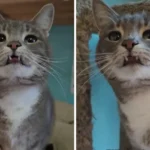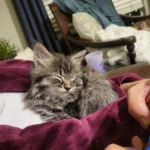Delhi Zoo faces a shocking crisis after seven big cats died within just 2.5 years, with most succumbing to mysterious kidney failure. The alarming death toll has triggered urgent investigations into potential causes behind these devastating losses. The latest victim was eight-year-old lioness Hema, who died from multiple organ failure on January 10th.
Wildlife experts are baffled by the pattern of kidney-related deaths affecting these magnificent predators. The crisis has raised serious questions about animal care standards, water quality, and veterinary protocols at India’s premier zoological facility. Moreover, it highlights broader concerns about captive big cat welfare nationwide. Public outcry demands immediate answers and accountability.
Alarming Pattern: Big Cats Face Deadly Kidney Crisis
Image credit: pexels
The disturbing trend began emerging over two and a half years as Delhi Zoo recorded an unprecedented number of big cat deaths. Seven magnificent predators have succumbed to various ailments, with kidney failure being the primary cause of death.
Veterinary records reveal a shocking pattern affecting multiple species. Lions, tigers, and leopards all experienced similar symptoms before their deaths. Additionally, the victims ranged from young adults to mature animals, suggesting environmental rather than age-related factors.
The most recent casualty was lioness Hema, whose death from multiple organ failure sent shockwaves through the zoological community. Her case particularly troubled experts because she showed no prior warning signs of illness.
Zoo officials initially attributed individual deaths to natural causes. However, the mounting toll has forced authorities to acknowledge a serious underlying problem requiring immediate investigation.
Wildlife conservationists expressed alarm at the unprecedented mortality rate among these critically important breeding populations.
Investigation Reveals Disturbing Big Cats Mortality Patterns
Veterinary pathologists conducted extensive post-mortem examinations on the deceased big cats to determine exact causes of death. Their findings revealed consistent kidney damage across multiple victims, suggesting common environmental triggers.
Water quality emerged as a primary concern during the investigation. Laboratory tests detected elevated levels of toxins and pollutants in the facility’s water supply systems. Furthermore, aging infrastructure may have contributed to contamination issues.
Dietary factors also came under scrutiny as investigators examined feeding protocols and meat quality standards. Some experts suspected contaminated food sources or nutritional deficiencies might have weakened the big cats’ immune systems.
Staff training and medical protocols faced intense review following the crisis. Critics questioned whether early warning signs were properly recognized and addressed by caretakers.
The investigation expanded to include environmental factors such as air pollution and stress levels affecting captive big cats in urban settings.
Public Outrage Demands Accountability for Big Cats Deaths
Image credit: pexels
Animal rights activists organized protests demanding immediate reforms at Delhi Zoo following the shocking mortality crisis. They accused management of negligence and inadequate care standards for these precious big cats.
Social media campaigns gained momentum as wildlife lovers shared heartbreaking stories of the deceased animals. Hashtags like #JusticeForBigCats trended as public anger intensified over the preventable deaths.
Parliamentary questions were raised about zoo management and government oversight of wildlife facilities. Politicians demanded detailed explanations and concrete action plans to prevent future tragedies.
International wildlife organizations expressed concern about India’s captive breeding programs. They warned that such mortality rates could undermine global conservation efforts for endangered big cats species.
Media investigations revealed similar problems at other Indian zoos, suggesting systemic issues affecting captive wildlife management nationwide.
Saving Remaining Big Cats Population
Zoo authorities implemented immediate emergency protocols to protect surviving big cats from further harm. They upgraded water filtration systems and introduced rigorous quality testing procedures.
Veterinary teams increased daily health monitoring for all remaining predators. They established new protocols for early detection of kidney problems and other serious health issues.
External wildlife experts were brought in to review all aspects of big cats care, from housing conditions to medical treatments. Their recommendations included major infrastructure improvements and staff retraining programs.
Dietary changes were implemented immediately, with enhanced meat quality controls and nutritional supplements added to prevent further health complications.
The facility temporarily suspended public visits to reduce stress levels among traumatized big cats while recovery measures were implemented.






